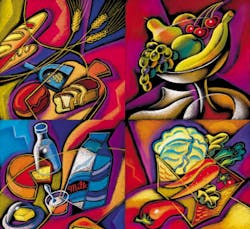Food Safety and Traceability Take on New Urgency
March 2, 2010
3 min read
President Obama has reinvigorated the Food and Drug Administration’s Food Safety Working Group, and change is on the way. It is more important than ever for executives at food-and-beverage manufacturers to get ahead of the curve and ensure food safety and traceability across their entire supply chains, from the field to the fork.This is the fourth year that Aberdeen has conducted research in the product safety and traceability arena, and not surprisingly, 2009 continued right where 2008 left off. There has yet to be a slowdown in the rate of high-impact food-and-beverage recalls. Food safety, compliance, product recalls and brand reputation have forced many organizations in the food-and-beverage industry to question their ability to provide enterprise-wide traceability. These manufacturers are re-examining the success of their traceability initiatives; with a focus on creating product and process traceability across the “innovate, source, make and deliver” business processes.To address upcoming regulatory concerns, as well as the needs of consumers world wide, food-and-beverage organizations are now beginning to “build in” compliance and traceability to production processes. In fact, a recent survey of more than 230 manufacturers showed that top-performing organizations were more than 40 percent more likely to be taking this strategic approach than other organizations. But what does it really mean to “build in” compliance and traceability?Building in compliance and traceability is a two-fold strategy. First, it involves gaining understanding and control of the production process itself. Compliance and traceability cannot be tested into production processes; rather, it must be assured through continuous monitoring of the process itself. The first step to accomplishing this is in identifying process-critical control points that can be measured and are predictive in regard to final product quality. Then, threshold levels for these critical control-point metrics must be established. The final piece is then to measure these critical control points in real or near real-time, which will allow for in-process adjustments and ultimately, the assurance of finished-product quality and compliance.The second part of building in compliance and traceability comes down to having the ability to recreate that which happened to a product through the manufacturing process—from the initial raw material to final product, including details on operators who worked on the product (or component that was built or mixed into product), equipment and tools used in the manufacturing process, rework that was done and the status of production-process control limits, among others. Having the ability to recreate manufacturing conditions and trace back from manufacturing conditions to supplier performance, as well as product development, significantly improves the ability of an enterprise to perform effective root-cause analysis in the event of a non-conformance, quality or recall event.Moving forward, food-and-beverage manufacturers will have to move beyond paper-based systems and automate product traceability across the supply chain. In the future, every manufacturer will have to have complete supplier, manufacturing and delivery data for every product at their finger tips and in real time. Incomplete, inaccurate or untimely data will no longer be acceptable. Change is certainly coming.Mehul Shah, [email protected], is Research Analyst, and Matthew Littlefield, [email protected], is Senior Research Analyst, at Aberdeen Group Inc., in Boston.
Subscribe to Automation World's RSS Feeds for Columns & Departments
About the Author
Sign up for our eNewsletters
Get the latest news and updates

Leaders relevant to this article:
